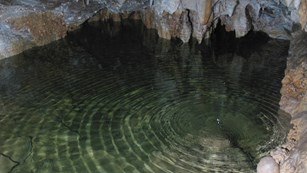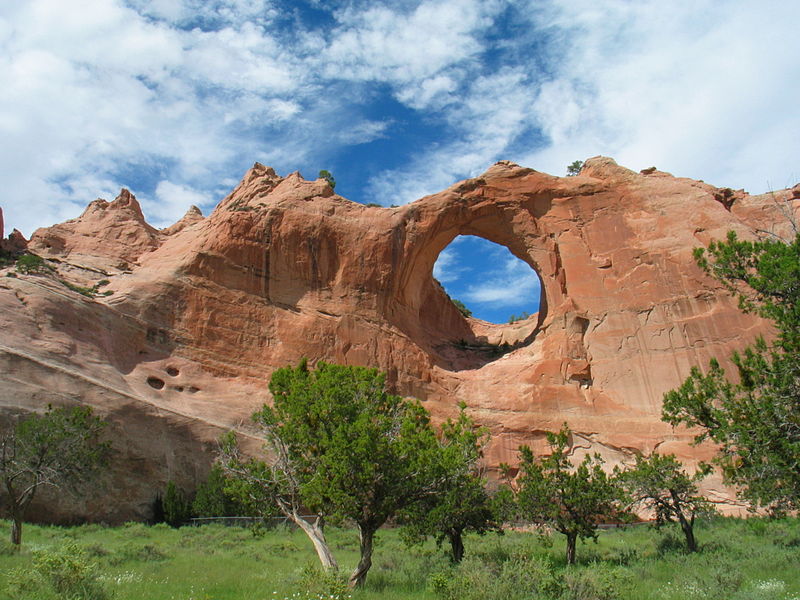
 amphitheater
a level area surrounded by upward sloping ground
anatomy
he branch of science concerned with the bodily structure of humans, animals, and other living organisms, especially as revealed by dissection and the separation of parts
andesite
a dark, fine-grained, brown or grayish volcanic rock that is intermediate in composition between rhyolite and basalt
aneroid barometer
device for measuring atmospheric pressure without the use of fluids. It consists of a partially evacuated metal chamber,
the thin corrugated lid of which is displaced by variations in the external air pressure
angular unconformity
landform structure created by deposition, uplift, erosion and renewed deposition
anhydrous
refers to substances that do not contain water
anion
a negatively charged ion
antecedent river
a river whose path of flow within a valley was established before the mountainous structure was uplifted
anthropogenic
related to human activity
anthropomorphic
described or thought of as having a human form or human attributes
anticline
a ridge-shaped fold of stratified rock in which the strata slope downward from the crest, often dome-shaped
antimony
a lustrous gray metalloid, found in nature mainly as the sulfide mineral stibnite
aphanitic
name given to certain igneous rocks that are so fine-grained that their component mineral crystals are not detectable by the unaided eye
aprioristic
doctrine that knowledge rests upon principles that are self-evident to reason or are presupposed by experience in general
aqueous
of or containing water, typically as a solvent
aquifer
a body of permeable rock which can contain or transmit groundwater
arable
used or suitable for growing crops
amphitheater
a level area surrounded by upward sloping ground
anatomy
he branch of science concerned with the bodily structure of humans, animals, and other living organisms, especially as revealed by dissection and the separation of parts
andesite
a dark, fine-grained, brown or grayish volcanic rock that is intermediate in composition between rhyolite and basalt
aneroid barometer
device for measuring atmospheric pressure without the use of fluids. It consists of a partially evacuated metal chamber,
the thin corrugated lid of which is displaced by variations in the external air pressure
angular unconformity
landform structure created by deposition, uplift, erosion and renewed deposition
anhydrous
refers to substances that do not contain water
anion
a negatively charged ion
antecedent river
a river whose path of flow within a valley was established before the mountainous structure was uplifted
anthropogenic
related to human activity
anthropomorphic
described or thought of as having a human form or human attributes
anticline
a ridge-shaped fold of stratified rock in which the strata slope downward from the crest, often dome-shaped
antimony
a lustrous gray metalloid, found in nature mainly as the sulfide mineral stibnite
aphanitic
name given to certain igneous rocks that are so fine-grained that their component mineral crystals are not detectable by the unaided eye
aprioristic
doctrine that knowledge rests upon principles that are self-evident to reason or are presupposed by experience in general
aqueous
of or containing water, typically as a solvent
aquifer
a body of permeable rock which can contain or transmit groundwater
arable
used or suitable for growing crops
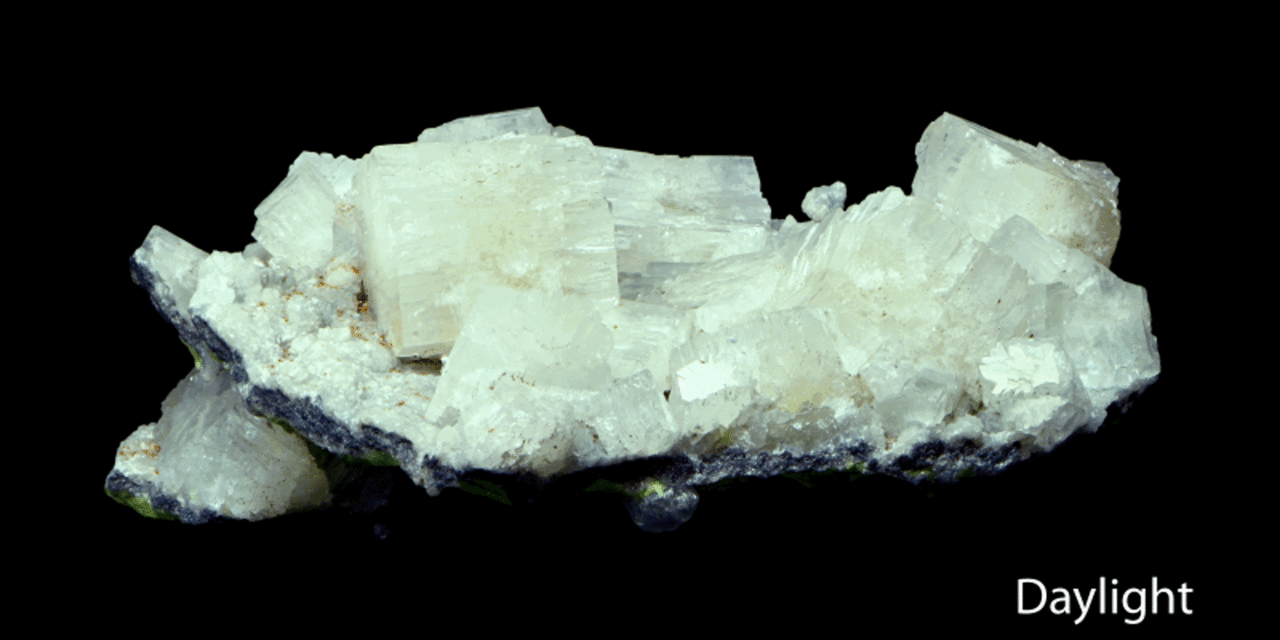


 basalt
a dark, fine-grained volcanic rock that sometimes displays a columnar structure, typically composed largely of plagioclase with pyroxene and olivine
base
a chemical species that donates electrons, accepts protons, or releases hydroxide ions in aqueous solution
base level
lowest level to which running water can flow and erode
batholith
a large mass of intrusive igneous rock larger than 100 square kilometers that forms from cooled magma deep in Earth's crust
bedding plane
the surface that separates each successive layer of a stratified rock from its preceding layer
bench
a flat narrow platform of land
bentonite
clay generated from the alteration of volcanic ash, consisting predominantly of smectite minerals, usually montmorillonite
beryllium
a steel-gray, light, brittle chemical element that occurs naturally in beryl used as a hardening agent in alloys
biology
he study of living organisms, divided into many specialized fields that cover their morphology, physiology, anatomy, behavior, origin, and distribution
biosphere
the regions of the surface, atmosphere, and hydrosphere occupied by living organisms
biotite
a silicate mineral also called black mica, abundant in metamorphic rocks, in pegmatites, granites and other intrusive igneous rocks
bivariate data
data of two variables, where each value of one of the variables is paired with a value of the other variable
brackish water
having more salinity than freshwater, but not as much as seawater
breccia
a rock made of cemented, angular fragments
bridge
a horizontal geologic structure formed by flowing water that cut through rock to create a large opening
basalt
a dark, fine-grained volcanic rock that sometimes displays a columnar structure, typically composed largely of plagioclase with pyroxene and olivine
base
a chemical species that donates electrons, accepts protons, or releases hydroxide ions in aqueous solution
base level
lowest level to which running water can flow and erode
batholith
a large mass of intrusive igneous rock larger than 100 square kilometers that forms from cooled magma deep in Earth's crust
bedding plane
the surface that separates each successive layer of a stratified rock from its preceding layer
bench
a flat narrow platform of land
bentonite
clay generated from the alteration of volcanic ash, consisting predominantly of smectite minerals, usually montmorillonite
beryllium
a steel-gray, light, brittle chemical element that occurs naturally in beryl used as a hardening agent in alloys
biology
he study of living organisms, divided into many specialized fields that cover their morphology, physiology, anatomy, behavior, origin, and distribution
biosphere
the regions of the surface, atmosphere, and hydrosphere occupied by living organisms
biotite
a silicate mineral also called black mica, abundant in metamorphic rocks, in pegmatites, granites and other intrusive igneous rocks
bivariate data
data of two variables, where each value of one of the variables is paired with a value of the other variable
brackish water
having more salinity than freshwater, but not as much as seawater
breccia
a rock made of cemented, angular fragments
bridge
a horizontal geologic structure formed by flowing water that cut through rock to create a large opening
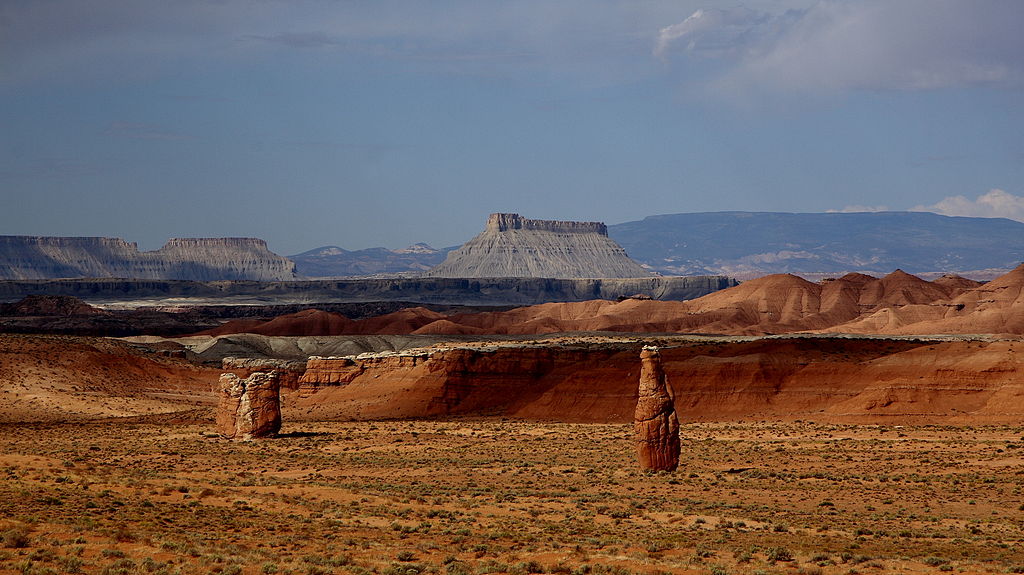


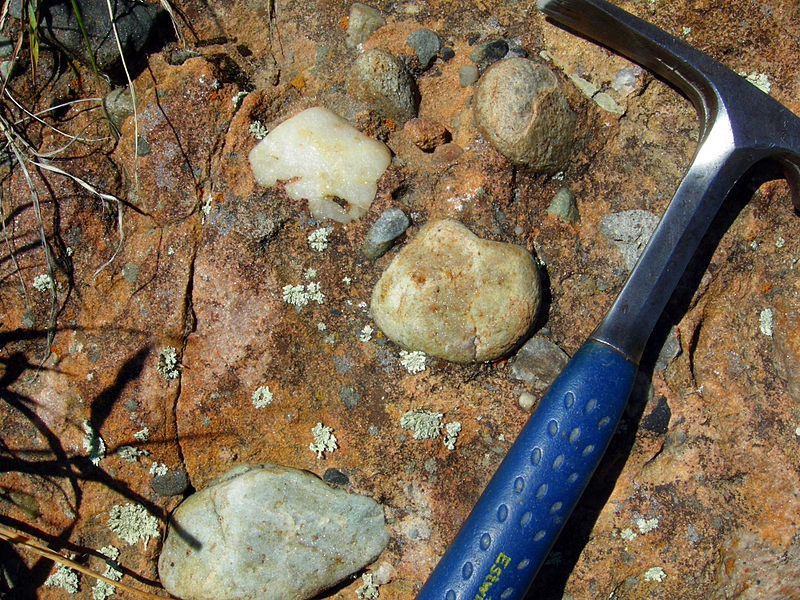
 conglomerate
a coarse-grained clastic sedimentary rock that is composed of a substantial fraction of rounded to subangular gravel-size clasts larger than 2 millimeters in diameter
contraction
shrinkage resulting from cooling
copper
a highly conductive metallic chemical element that is easily formed into sheets and wires
correlation
any statistical relationship, whether causal or not, between two random variables or bivariate data
cosmology
the science of the origin and development of the universe
covalent
relating to chemical bonds formed by the sharing of electrons between atoms
crag
a steep or rugged cliff or rock face
creationism
belief that the universe and living organisms originate from specific acts of divine creation, as in the biblical account, rather than by natural processes such as evolution
Cretaceous
the last period of the Mesozoic era, between the Jurassic and Tertiary periods
cryosphere
portions of a planet's surface where water is solid, including sea ice, lake ice, river ice, snow cover, glaciers, ice caps, ice sheets, and frozen ground
cultivation
preparing soil for crop planting
cyanide
a large group of poisonous chemical compounds used to make plastics and to extract and treat metals
D ↑
dacite
a volcanic rock resembling andesite but containing free quartz
debouching
emerging from a narrow or confined space into a wide, open area
decomposition
the separation of a substance into simpler substances or basic elements
deduction
inference of particular instances by reference to a general law or principle
delta
triangular tract of sediment deposited at the mouth of a river, typically where it diverges into several outlets
demarcation
the action of fixing the boundary or limits of something
deposition (chemistry)
transition of a substance directly from the gas to the solid phase, without passing through the intermediate liquid phase
deposition (geology)
process in which sediments, soil and rocks are added to existing layers of sediments, soil or rock
detritus
gravel, sand, silt, or other material produced by erosion or organic matter produced by the decomposition of organisms
deuterium
isotope of hydrogen with a nucleus consisting of one proton and one neutron
Devonian
a geologic period of the Paleozoic, spanning 60 million years from the end of the Silurian, 419.2 million years ago, to the beginning of the Carboniferous, 358.9 million years ago
diabase
igneous rock also called dolerite
diatom
a single-celled alga which has a cell wall of silica
dihydrogen monoxide
chemical name for water
conglomerate
a coarse-grained clastic sedimentary rock that is composed of a substantial fraction of rounded to subangular gravel-size clasts larger than 2 millimeters in diameter
contraction
shrinkage resulting from cooling
copper
a highly conductive metallic chemical element that is easily formed into sheets and wires
correlation
any statistical relationship, whether causal or not, between two random variables or bivariate data
cosmology
the science of the origin and development of the universe
covalent
relating to chemical bonds formed by the sharing of electrons between atoms
crag
a steep or rugged cliff or rock face
creationism
belief that the universe and living organisms originate from specific acts of divine creation, as in the biblical account, rather than by natural processes such as evolution
Cretaceous
the last period of the Mesozoic era, between the Jurassic and Tertiary periods
cryosphere
portions of a planet's surface where water is solid, including sea ice, lake ice, river ice, snow cover, glaciers, ice caps, ice sheets, and frozen ground
cultivation
preparing soil for crop planting
cyanide
a large group of poisonous chemical compounds used to make plastics and to extract and treat metals
D ↑
dacite
a volcanic rock resembling andesite but containing free quartz
debouching
emerging from a narrow or confined space into a wide, open area
decomposition
the separation of a substance into simpler substances or basic elements
deduction
inference of particular instances by reference to a general law or principle
delta
triangular tract of sediment deposited at the mouth of a river, typically where it diverges into several outlets
demarcation
the action of fixing the boundary or limits of something
deposition (chemistry)
transition of a substance directly from the gas to the solid phase, without passing through the intermediate liquid phase
deposition (geology)
process in which sediments, soil and rocks are added to existing layers of sediments, soil or rock
detritus
gravel, sand, silt, or other material produced by erosion or organic matter produced by the decomposition of organisms
deuterium
isotope of hydrogen with a nucleus consisting of one proton and one neutron
Devonian
a geologic period of the Paleozoic, spanning 60 million years from the end of the Silurian, 419.2 million years ago, to the beginning of the Carboniferous, 358.9 million years ago
diabase
igneous rock also called dolerite
diatom
a single-celled alga which has a cell wall of silica
dihydrogen monoxide
chemical name for water

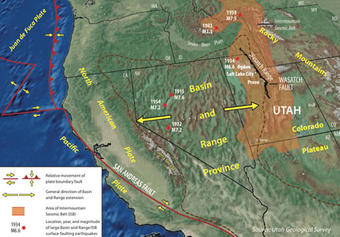
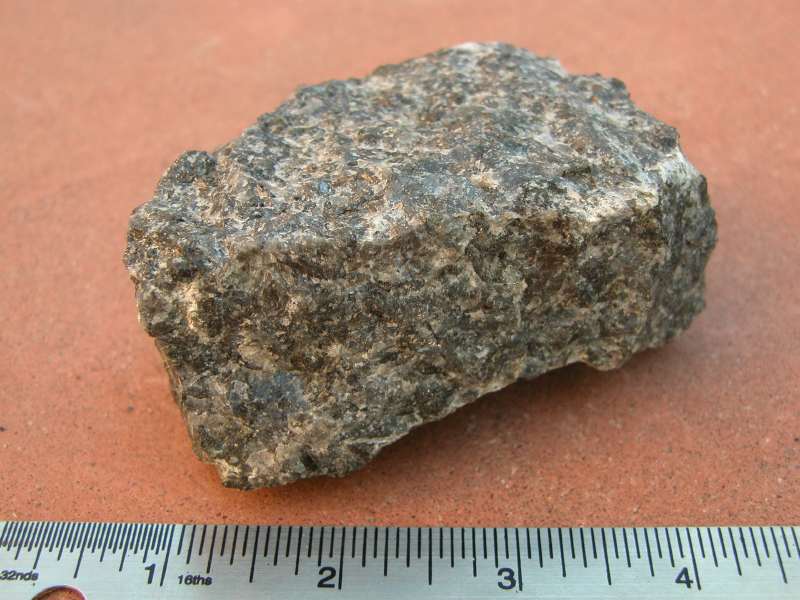
 gabbro
a dense, mafic intrusive rock generally occurring as batholiths and laccoliths and often found along mid-ocean ridges or in ancient mountains composed
of compressed and uplifted oceanic crust
garnet
a large group of rock-forming minerals with a common crystal structure and a generalized chemical composition of X3Y2(SiO4)3
gene
the basic physical and functional unit of heredity
genetics
the study of heredity and the variation of inherited characteristic
geochronology
the branch of geology concerned with the dating of rock formations and geological events
geodetic
relating to land surveying
geology
the science that deals with Earth's physical structure and substance, its history, and the processes that act on it
geyser
a hot spring in which water intermittently boils, and emits a tall column of water and steam into the atmosphere
glacier
a slowly moving mass or river of ice formed by the accumulation and compaction of snow on mountains or near the poles
global warming
a gradual increase in the overall temperature of the earth's atmosphere generally attributed to the greenhouse effect caused by increased levels of carbon dioxide, chlorofluorocarbons, and other pollutants
gneiss
common type of metamorphic rock formed by high temperature and high-pressure
gorge
narrow valley between hills or mountains, typically with steep rocky walls and a stream running through it
gradation
a scale or a series of successive changes, stages, or degrees
gradient
an increase or decrease in the magnitude of a physical property
gradientor
micrometer attachment that measures the elevation of the telescope with great precision
gabbro
a dense, mafic intrusive rock generally occurring as batholiths and laccoliths and often found along mid-ocean ridges or in ancient mountains composed
of compressed and uplifted oceanic crust
garnet
a large group of rock-forming minerals with a common crystal structure and a generalized chemical composition of X3Y2(SiO4)3
gene
the basic physical and functional unit of heredity
genetics
the study of heredity and the variation of inherited characteristic
geochronology
the branch of geology concerned with the dating of rock formations and geological events
geodetic
relating to land surveying
geology
the science that deals with Earth's physical structure and substance, its history, and the processes that act on it
geyser
a hot spring in which water intermittently boils, and emits a tall column of water and steam into the atmosphere
glacier
a slowly moving mass or river of ice formed by the accumulation and compaction of snow on mountains or near the poles
global warming
a gradual increase in the overall temperature of the earth's atmosphere generally attributed to the greenhouse effect caused by increased levels of carbon dioxide, chlorofluorocarbons, and other pollutants
gneiss
common type of metamorphic rock formed by high temperature and high-pressure
gorge
narrow valley between hills or mountains, typically with steep rocky walls and a stream running through it
gradation
a scale or a series of successive changes, stages, or degrees
gradient
an increase or decrease in the magnitude of a physical property
gradientor
micrometer attachment that measures the elevation of the telescope with great precision

 granite
formed from the slow crystallization of magma below Earth's surface, a light-colored igneous rock composed mainly of quartz and feldspar with minor amounts of
mica, amphiboles, and other minerals with grains large enough to be visible with the unaided eye
graupel
precipitation that forms when supercooled water droplets are collected and freeze on falling snowflakes, forming 2 to 5 millimeter balls of rime
gravel
loose aggregation of rock fragments, classified by particle size range and includes size classes from granule- to boulder-sized fragments
graywater
wastewater collected separately from sewage flow originating from a clothes washer, bathtub, shower or sink, but not from a kitchen sink, dishwasher or toilet
greenstone
rock formed when mafic minerals which make basalt black are commonly changed into a green mineral called chlorite as they are exposed to surface weathering processes
gypsum
a soft white or gray mineral consisting of hydrated calcium sulfate which occurs chiefly in sedimentary deposits
H ↑
habitable zone
the orbital region around a star in which an Earth-like planet can possess liquid water on its surface and possibly support life
hanging glacier
a glacier that begins high on a glacier valley wall and descends only part of the way to the surface of the main glacier
hectare
a metric unit of square measure, equal to 100 acres
helictite
a distorted form of stalactite that resembles a twig
hematite
a common iron oxide black to steel or silver-gray, brown to reddish-brown, or red in color that usually precipitates from water and collect in layers at the bottom of a lake, spring, or other standing water
heuristic
any approach to problem solving or self-discovery that employs a practical method that is not guaranteed to be optimal, perfect, or rational, but is nevertheless sufficient for reaching an immediate, short-term goal or approximation
homeopathic
related to the treatment of disease by minute doses of natural substances that in a healthy person would produce symptoms of disease
hoodoo
a column or pinnacle of weathered rock
hornblende
a dark brown, black, or green mineral of the amphibole group consisting of a hydroxyl alumino-silicate of calcium, magnesium, and iron, occurring
in many igneous and metamorphic rocks
granite
formed from the slow crystallization of magma below Earth's surface, a light-colored igneous rock composed mainly of quartz and feldspar with minor amounts of
mica, amphiboles, and other minerals with grains large enough to be visible with the unaided eye
graupel
precipitation that forms when supercooled water droplets are collected and freeze on falling snowflakes, forming 2 to 5 millimeter balls of rime
gravel
loose aggregation of rock fragments, classified by particle size range and includes size classes from granule- to boulder-sized fragments
graywater
wastewater collected separately from sewage flow originating from a clothes washer, bathtub, shower or sink, but not from a kitchen sink, dishwasher or toilet
greenstone
rock formed when mafic minerals which make basalt black are commonly changed into a green mineral called chlorite as they are exposed to surface weathering processes
gypsum
a soft white or gray mineral consisting of hydrated calcium sulfate which occurs chiefly in sedimentary deposits
H ↑
habitable zone
the orbital region around a star in which an Earth-like planet can possess liquid water on its surface and possibly support life
hanging glacier
a glacier that begins high on a glacier valley wall and descends only part of the way to the surface of the main glacier
hectare
a metric unit of square measure, equal to 100 acres
helictite
a distorted form of stalactite that resembles a twig
hematite
a common iron oxide black to steel or silver-gray, brown to reddish-brown, or red in color that usually precipitates from water and collect in layers at the bottom of a lake, spring, or other standing water
heuristic
any approach to problem solving or self-discovery that employs a practical method that is not guaranteed to be optimal, perfect, or rational, but is nevertheless sufficient for reaching an immediate, short-term goal or approximation
homeopathic
related to the treatment of disease by minute doses of natural substances that in a healthy person would produce symptoms of disease
hoodoo
a column or pinnacle of weathered rock
hornblende
a dark brown, black, or green mineral of the amphibole group consisting of a hydroxyl alumino-silicate of calcium, magnesium, and iron, occurring
in many igneous and metamorphic rocks

 hornfels
a metamorphic rock formed by the contact between mudstone and shale, or other clay-rich rock, and a hot igneous body,
representing a heat-altered equivalent of the original rock
hot spot
volcanic regions that are not found at the edges of continents or faults
humidity
concentration of water vapour present in the air
humus
the organic component of soil, formed by the decomposition of leaves and other plant material by soil microorganisms
hydrated
chemically combined with water
hydroelectric power
the use of flowing water to power a turbine to produce electrical energy
hydrogen
a colorless, odorless, highly flammable gas, the chemical element of atomic number 1
hydrogeology
geology that deals with the distribution and movement of groundwater in the soil and rocks of the Earth's crust
hydrography
the science of surveying and charting bodies of water, such as seas, lakes, and rivers
hydroinformatics
application of information and communications technologies to address problems in the equitable and efficient use of water for many different purposes
hydrology
the science concerned with the properties of Earth's water, and especially its movement in relation to land
hydrometeorology
the study of the transfer of water and energy between the land surface and the lower atmosphere
hydrosphere
the combined mass of water found on, under, and above Earth's surface
hydrostatic pressure
the pressure exerted by a fluid at equilibrium at a given point within the fluid, due to the force of gravity
hydrous
refers to substances containing water
hydroxide
a compound of a metal with the hydroxide ion OH- or the group -OH
hydroxyl
of or denoting the radical -OH, present in alcohols and many other organic compounds
hypothesis
supposition or proposed explanation made on the basis of limited evidence as a starting point for further investigation
hypsometric
relating to the measurement of heights
I ↑
ice sheet
a mass of glacial land ice extending more than 50,000 square kilometers (20,000 square miles)
hornfels
a metamorphic rock formed by the contact between mudstone and shale, or other clay-rich rock, and a hot igneous body,
representing a heat-altered equivalent of the original rock
hot spot
volcanic regions that are not found at the edges of continents or faults
humidity
concentration of water vapour present in the air
humus
the organic component of soil, formed by the decomposition of leaves and other plant material by soil microorganisms
hydrated
chemically combined with water
hydroelectric power
the use of flowing water to power a turbine to produce electrical energy
hydrogen
a colorless, odorless, highly flammable gas, the chemical element of atomic number 1
hydrogeology
geology that deals with the distribution and movement of groundwater in the soil and rocks of the Earth's crust
hydrography
the science of surveying and charting bodies of water, such as seas, lakes, and rivers
hydroinformatics
application of information and communications technologies to address problems in the equitable and efficient use of water for many different purposes
hydrology
the science concerned with the properties of Earth's water, and especially its movement in relation to land
hydrometeorology
the study of the transfer of water and energy between the land surface and the lower atmosphere
hydrosphere
the combined mass of water found on, under, and above Earth's surface
hydrostatic pressure
the pressure exerted by a fluid at equilibrium at a given point within the fluid, due to the force of gravity
hydrous
refers to substances containing water
hydroxide
a compound of a metal with the hydroxide ion OH- or the group -OH
hydroxyl
of or denoting the radical -OH, present in alcohols and many other organic compounds
hypothesis
supposition or proposed explanation made on the basis of limited evidence as a starting point for further investigation
hypsometric
relating to the measurement of heights
I ↑
ice sheet
a mass of glacial land ice extending more than 50,000 square kilometers (20,000 square miles)



 limestone
hard sedimentary rock, composed mainly of calcium carbonate or dolomite, used as building material and in the making of cement
lithify
transform from sediment into stone
lithosphere
the rigid outer part of the Earth, consisting of the crust and upper mantle
Little Ice Age
climate cooling period that occurred from the early 14th century through the mid-19th century, when mountain glaciers expanded at several locations, including the European Alps, New Zealand, Alaska, and the southern Andes, and mean annual temperatures across the Northern Hemisphere declined by 0.6oC
lixiviation
the process of separating soluble from insoluble substances by dissolving the former in water or some other solvent
loam
a fertile soil of clay and sand containing humus
lysenkoism
the theories of the Soviet biologist and geneticist Trofim Denisovich Lysenko, in particular those relating to organic evolution
M ↑
mafic
relating to a group of dark-colored, mainly ferromagnesian minerals such as pyroxene and olivine
magma
hot fluid material below or within Earth's crust from which lava and other igneous rock is formed after cooling
manganese
a grayish-white, hard, brittle metallic element that resembles iron but is not magnetic and is used in alloys, batteries, and plant fertilizers
magnesia
a hydrated magnesium carbonate
magnesium
the chemical element of atomic number 12, a silver-white metal of the alkaline earth series. It is used to make strong lightweight alloys
limestone
hard sedimentary rock, composed mainly of calcium carbonate or dolomite, used as building material and in the making of cement
lithify
transform from sediment into stone
lithosphere
the rigid outer part of the Earth, consisting of the crust and upper mantle
Little Ice Age
climate cooling period that occurred from the early 14th century through the mid-19th century, when mountain glaciers expanded at several locations, including the European Alps, New Zealand, Alaska, and the southern Andes, and mean annual temperatures across the Northern Hemisphere declined by 0.6oC
lixiviation
the process of separating soluble from insoluble substances by dissolving the former in water or some other solvent
loam
a fertile soil of clay and sand containing humus
lysenkoism
the theories of the Soviet biologist and geneticist Trofim Denisovich Lysenko, in particular those relating to organic evolution
M ↑
mafic
relating to a group of dark-colored, mainly ferromagnesian minerals such as pyroxene and olivine
magma
hot fluid material below or within Earth's crust from which lava and other igneous rock is formed after cooling
manganese
a grayish-white, hard, brittle metallic element that resembles iron but is not magnetic and is used in alloys, batteries, and plant fertilizers
magnesia
a hydrated magnesium carbonate
magnesium
the chemical element of atomic number 12, a silver-white metal of the alkaline earth series. It is used to make strong lightweight alloys
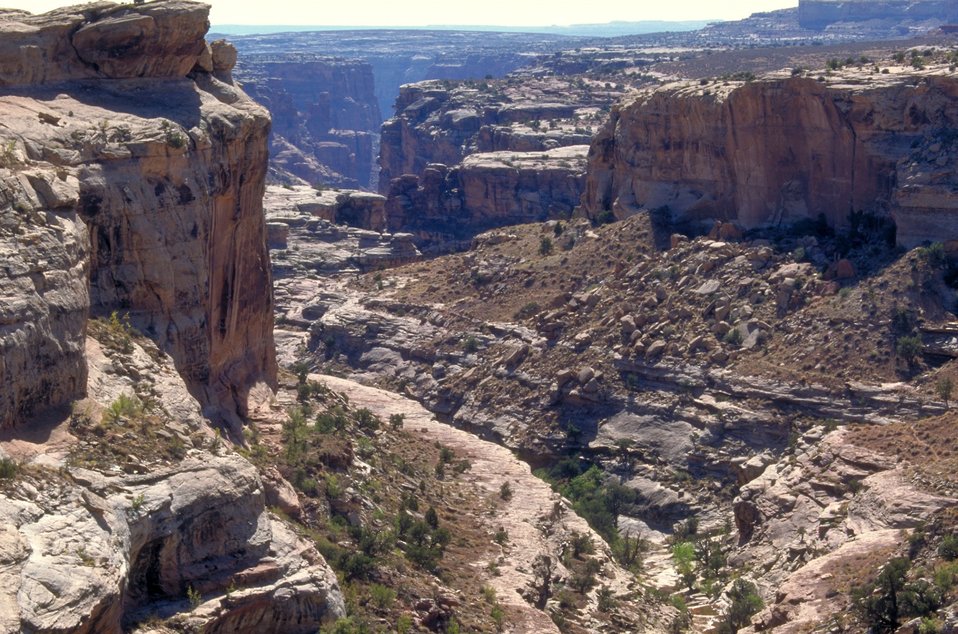
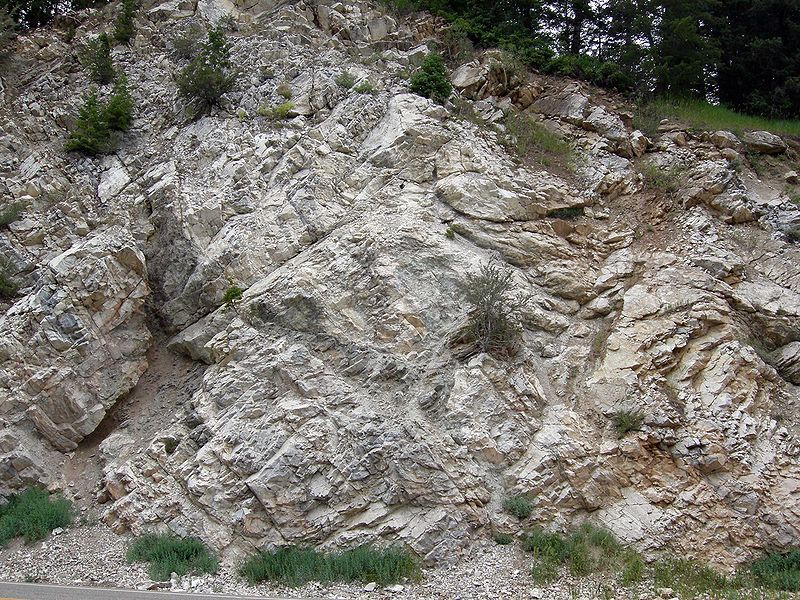
 metamorphic
relating to rock that has undergone transformation by heat, pressure, or other natural processes
meteorology
he branch of science concerned with the processes and phenomena of the atmosphere, especially as a means of forecasting the weather
mica
a shiny silicate mineral with a layered structure, found as minute scales in granite and other rocks, or as crystals
migmatite
a composite rock found in medium and high-grade metamorphic environments
mineral
substance occurring in nature usually comprising inorganic materials s of definite chemical composition and definite crystal structure,
may include organic substances such as coal
mode
the number which appears most often in a set of numbers
molecular polarity
a separation of electric charge in a molecule that results in a negatively charged end and a positively charged end
molecule
a group of atoms bonded together, representing the smallest fundamental unit of a chemical compound that can take part in a chemical reaction
monoclinal ridge
top of a step-like fold in rock strata consisting of a zone of steeper dip within an otherwise horizontal or gently-dipping sequence
metamorphic
relating to rock that has undergone transformation by heat, pressure, or other natural processes
meteorology
he branch of science concerned with the processes and phenomena of the atmosphere, especially as a means of forecasting the weather
mica
a shiny silicate mineral with a layered structure, found as minute scales in granite and other rocks, or as crystals
migmatite
a composite rock found in medium and high-grade metamorphic environments
mineral
substance occurring in nature usually comprising inorganic materials s of definite chemical composition and definite crystal structure,
may include organic substances such as coal
mode
the number which appears most often in a set of numbers
molecular polarity
a separation of electric charge in a molecule that results in a negatively charged end and a positively charged end
molecule
a group of atoms bonded together, representing the smallest fundamental unit of a chemical compound that can take part in a chemical reaction
monoclinal ridge
top of a step-like fold in rock strata consisting of a zone of steeper dip within an otherwise horizontal or gently-dipping sequence


 normal distribution
a function that represents the distribution of many random variables as a symmetrical bell-shaped graph
nucleic acid
a complex organic substance present in living cells, especially DNA or RNA, whose molecules consist of many nucleotides linked in a long chain
nucleoside
a compound commonly found in DNA or RNA
nucleotide
a compound consisting of a nucleoside linked to a phosphate group, forms the basic structural unit of nucleic acids such as DNA
O ↑
obsidian
a naturally occurring volcanic glass formed as an extrusive igneous rock, produced when felsic lava extruded from a volcano cools rapidly with minimal crystal growth
normal distribution
a function that represents the distribution of many random variables as a symmetrical bell-shaped graph
nucleic acid
a complex organic substance present in living cells, especially DNA or RNA, whose molecules consist of many nucleotides linked in a long chain
nucleoside
a compound commonly found in DNA or RNA
nucleotide
a compound consisting of a nucleoside linked to a phosphate group, forms the basic structural unit of nucleic acids such as DNA
O ↑
obsidian
a naturally occurring volcanic glass formed as an extrusive igneous rock, produced when felsic lava extruded from a volcano cools rapidly with minimal crystal growth
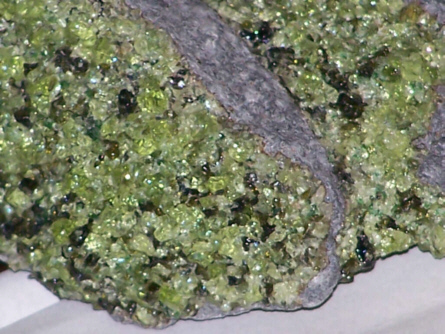
 olivine
an olive-green, gray-green, or brown silicate mineral occurring widely in basalt, peridotite, and other basic igneous rocks
omphacite
a member of the pyroxene group of silicate minerals with formula (Ca, Na)(Mg, Fe2+, Al)Si2O6
ooid
small, spheroidal, coated sedimentary grains, usually composed of calcium carbonate, sometimes of iron- or phosphate-based minerals, usually form on the sea floor,
most commonly in shallow tropical seas
organelle
an organized or specialized structure in a living cell
organic
produced or involving production without the use of chemical fertilizers, pesticides, or other artificial substances
orogeny
a process by which Earth's crust is folded and deformed, creating mountains
orograph
machine used in making topographical maps that is operated by being pushed across country and that records both distances and elevations
oxbow lake
a curved lake formed where the main stream of a river has cut across the narrow end and no longer flows around the loop of the bend
oxidizing
chemically combining with oxygen
oxygen
a colorless, odorless reactive gas, the chemical element of atomic number 8 and the life-supporting component of the air
P ↑
paleontologist
a scientist who studies fossils
Paleozoic
relating to or denoting the era between the Precambrian eon and the Mesozoic era
olivine
an olive-green, gray-green, or brown silicate mineral occurring widely in basalt, peridotite, and other basic igneous rocks
omphacite
a member of the pyroxene group of silicate minerals with formula (Ca, Na)(Mg, Fe2+, Al)Si2O6
ooid
small, spheroidal, coated sedimentary grains, usually composed of calcium carbonate, sometimes of iron- or phosphate-based minerals, usually form on the sea floor,
most commonly in shallow tropical seas
organelle
an organized or specialized structure in a living cell
organic
produced or involving production without the use of chemical fertilizers, pesticides, or other artificial substances
orogeny
a process by which Earth's crust is folded and deformed, creating mountains
orograph
machine used in making topographical maps that is operated by being pushed across country and that records both distances and elevations
oxbow lake
a curved lake formed where the main stream of a river has cut across the narrow end and no longer flows around the loop of the bend
oxidizing
chemically combining with oxygen
oxygen
a colorless, odorless reactive gas, the chemical element of atomic number 8 and the life-supporting component of the air
P ↑
paleontologist
a scientist who studies fossils
Paleozoic
relating to or denoting the era between the Precambrian eon and the Mesozoic era
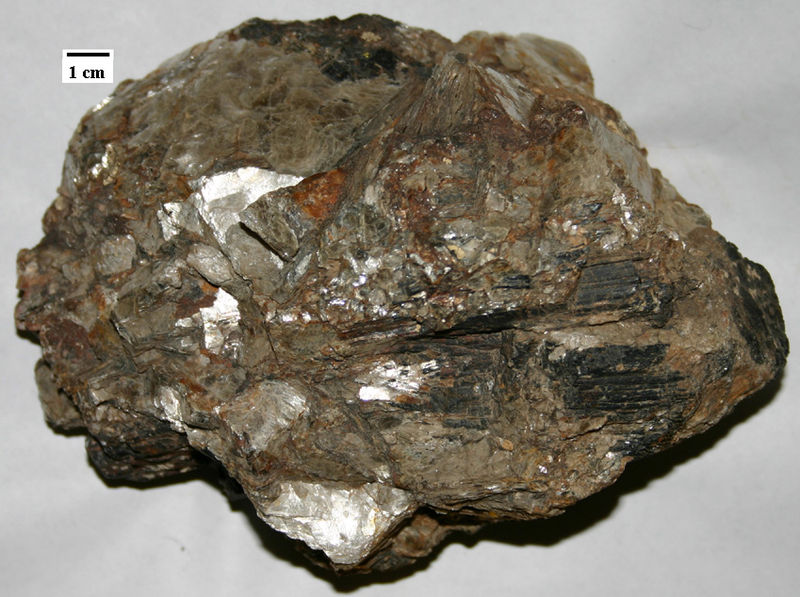
 paraconformity
strata on either side of the unconformity are parallel, there is little apparent erosion
paranormal
denoting events or phenomena such as telekinesis or clairvoyance that are beyond the scope of normal scientific understanding
parapsychology
the study of mental phenomena which are excluded from or inexplicable by orthodox scientific psychology
peer review
evaluation of scientific, academic, or professional work by others working in the same field
pegmatite
a coarsely crystalline granite or other igneous rock with crystals several centimeters to several meters in length
percolation
process of a liquid slowly passing through a filter or the ground
perennial
present all seasons of the year
peridotite
a dense, coarse-grained plutonic rock containing a large amount of olivine, believed to be the main constituent of Earth's mantle
permeable
a material that allows liquids or gases to pass through it
Permian
a geologic period which spans 47 million years from the end of the Carboniferous period 298.9 million years ago to the beginning of the Triassic period 251.902 million years ago,
it is the last period of the Paleozoic era
pH
scale used to specify how acidic or alkaline a water-based solution is, acidic solutions have lower pH, and alkaline solutions have higher pH
pharmacology
the branch of medicine concerned with the uses, effects, and modes of action of drugs
phenology
the study of cyclic and seasonal natural phenomena, especially in relation to climate and plant and animal life
phosphate group
a molecule containing one atom of phosphorus covalently bound to four oxygen residues
phosphorous
a poisonous, combustible nonmetal which exists as white phosphorus, a yellowish waxy solid which ignites spontaneously in air and glows in the dark, and red phosphorus, a less reactive form used in making matches
phrenology
the detailed study of the shape and size of the cranium as a supposed indication of character and mental abilities
phylum
a principal taxonomic category that ranks above class and below kingdom
phyllite
a type of foliated metamorphic rock created from slate further metamorphosed so that very fine grained white mica achieves a preferred orientation
physics
the branch of science concerned with the nature and properties of matter and energy
physiology
he branch of biology that deals with the normal functions of living organisms and their parts
piedmont glacier
a fan or lobe-shaped glacier, located at the front of a mountain range
pinnacle
a high, pointed piece of rock
paraconformity
strata on either side of the unconformity are parallel, there is little apparent erosion
paranormal
denoting events or phenomena such as telekinesis or clairvoyance that are beyond the scope of normal scientific understanding
parapsychology
the study of mental phenomena which are excluded from or inexplicable by orthodox scientific psychology
peer review
evaluation of scientific, academic, or professional work by others working in the same field
pegmatite
a coarsely crystalline granite or other igneous rock with crystals several centimeters to several meters in length
percolation
process of a liquid slowly passing through a filter or the ground
perennial
present all seasons of the year
peridotite
a dense, coarse-grained plutonic rock containing a large amount of olivine, believed to be the main constituent of Earth's mantle
permeable
a material that allows liquids or gases to pass through it
Permian
a geologic period which spans 47 million years from the end of the Carboniferous period 298.9 million years ago to the beginning of the Triassic period 251.902 million years ago,
it is the last period of the Paleozoic era
pH
scale used to specify how acidic or alkaline a water-based solution is, acidic solutions have lower pH, and alkaline solutions have higher pH
pharmacology
the branch of medicine concerned with the uses, effects, and modes of action of drugs
phenology
the study of cyclic and seasonal natural phenomena, especially in relation to climate and plant and animal life
phosphate group
a molecule containing one atom of phosphorus covalently bound to four oxygen residues
phosphorous
a poisonous, combustible nonmetal which exists as white phosphorus, a yellowish waxy solid which ignites spontaneously in air and glows in the dark, and red phosphorus, a less reactive form used in making matches
phrenology
the detailed study of the shape and size of the cranium as a supposed indication of character and mental abilities
phylum
a principal taxonomic category that ranks above class and below kingdom
phyllite
a type of foliated metamorphic rock created from slate further metamorphosed so that very fine grained white mica achieves a preferred orientation
physics
the branch of science concerned with the nature and properties of matter and energy
physiology
he branch of biology that deals with the normal functions of living organisms and their parts
piedmont glacier
a fan or lobe-shaped glacier, located at the front of a mountain range
pinnacle
a high, pointed piece of rock

 plagioclase
a typically white form of feldspar consisting of aluminosilicates of sodium or calcium, common in igneous rocks
planetary science
the science of the similarities and differences of planetary bodies
plankton
the small and microscopic organisms drifting or floating in the sea or fresh water, consisting of diatoms, protozoans, small crustaceans, and the eggs and larval stages of larger animals
plateau
area of relatively level high ground
plutonic
refers to intrusive igneous rock that forms when magma is trapped deep inside the Earth
polar glacier
a glacier with a thermal or temperature regime in which ice temperatures always remain below the freezing point
polymer
a substance made of similar molecular chains bonded together
porphyritic
denoting a rock texture, typically found in volcanic rocks, containing distinct crystalline particles
porous
rock having minute spaces or holes through which liquid or air may pass
potash
an alkaline potassium compound, especially potassium carbonate or hydroxide
potassium
the chemical element of atomic number 19, a soft silvery-white reactive metal of the alkali metal group
Precambrian
the earliest part of Earth's history, set before the current Phanerozoic Eon
precipitation
any product of the condensation of atmospheric water vapor that falls under gravity, includes drizzle, rain, sleet, snow, graupel and hail
precognition
foreknowledge of an event, especially foreknowledge of a paranormal kind
probability
the branch of mathematics that deals with chance
protein
nitrogenous organic compounds that consist of large molecules composed of one or more long chains of amino acids and are an essential part of all living organisms
plagioclase
a typically white form of feldspar consisting of aluminosilicates of sodium or calcium, common in igneous rocks
planetary science
the science of the similarities and differences of planetary bodies
plankton
the small and microscopic organisms drifting or floating in the sea or fresh water, consisting of diatoms, protozoans, small crustaceans, and the eggs and larval stages of larger animals
plateau
area of relatively level high ground
plutonic
refers to intrusive igneous rock that forms when magma is trapped deep inside the Earth
polar glacier
a glacier with a thermal or temperature regime in which ice temperatures always remain below the freezing point
polymer
a substance made of similar molecular chains bonded together
porphyritic
denoting a rock texture, typically found in volcanic rocks, containing distinct crystalline particles
porous
rock having minute spaces or holes through which liquid or air may pass
potash
an alkaline potassium compound, especially potassium carbonate or hydroxide
potassium
the chemical element of atomic number 19, a soft silvery-white reactive metal of the alkali metal group
Precambrian
the earliest part of Earth's history, set before the current Phanerozoic Eon
precipitation
any product of the condensation of atmospheric water vapor that falls under gravity, includes drizzle, rain, sleet, snow, graupel and hail
precognition
foreknowledge of an event, especially foreknowledge of a paranormal kind
probability
the branch of mathematics that deals with chance
protein
nitrogenous organic compounds that consist of large molecules composed of one or more long chains of amino acids and are an essential part of all living organisms
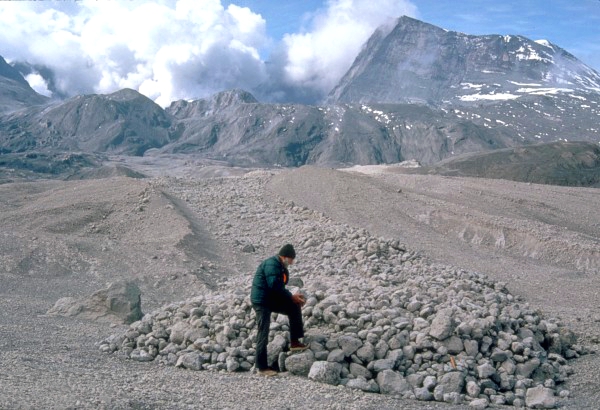

 respiration
a process in living organisms involving the production of energy, typically with the intake of oxygen and the release of carbon dioxide from the oxidation of complex organic substances
rhyolite
an extrusive igneous rock with a very high silica content, usually pink or gray in color with grains so small that they are difficult to observe without a hand lens,
made up of quartz, plagioclase, and sanidine, with minor amounts of hornblende and biotite
ridge
a long narrow hilltop, mountain range, or watershed
rill
a small stream
rime
frost formed on cold objects by the rapid freezing of water vapor in cloud or fog
riparian
relating to wetlands adjacent to rivers and streams
rivulet
avery small stream
RNA
ribonucleic acid, a polymeric molecule essential in various biological roles in coding, decoding, regulation and expression of genes
runaway greenhouse effect
occurs when a planet's atmosphere contains greenhouse gases that block heat escaping from the planet, preventing the planet from cooling and from having liquid water on its surface
rock
any naturally occurring solid mass or aggregate of minerals
rock glacier
a glacier-like landform that consists of a valley-filling accumulation of angular rock blocks, has little or no visible surface ice
S ↑
sagebrush
a shrubby aromatic North American plant of the daisy family
saline
containing salt
salt
any chemical compound formed from the reaction of an acid with a base, with all or part of the hydrogen of the acid replaced by a metal or other cation
sample space
the set of possible outcomes of an experiment
respiration
a process in living organisms involving the production of energy, typically with the intake of oxygen and the release of carbon dioxide from the oxidation of complex organic substances
rhyolite
an extrusive igneous rock with a very high silica content, usually pink or gray in color with grains so small that they are difficult to observe without a hand lens,
made up of quartz, plagioclase, and sanidine, with minor amounts of hornblende and biotite
ridge
a long narrow hilltop, mountain range, or watershed
rill
a small stream
rime
frost formed on cold objects by the rapid freezing of water vapor in cloud or fog
riparian
relating to wetlands adjacent to rivers and streams
rivulet
avery small stream
RNA
ribonucleic acid, a polymeric molecule essential in various biological roles in coding, decoding, regulation and expression of genes
runaway greenhouse effect
occurs when a planet's atmosphere contains greenhouse gases that block heat escaping from the planet, preventing the planet from cooling and from having liquid water on its surface
rock
any naturally occurring solid mass or aggregate of minerals
rock glacier
a glacier-like landform that consists of a valley-filling accumulation of angular rock blocks, has little or no visible surface ice
S ↑
sagebrush
a shrubby aromatic North American plant of the daisy family
saline
containing salt
salt
any chemical compound formed from the reaction of an acid with a base, with all or part of the hydrogen of the acid replaced by a metal or other cation
sample space
the set of possible outcomes of an experiment

 sandstone
sedimentary rock composed of sand-size grains of mineral, rock, or organic material
schist
coarse-grained metamorphic rock which consists of layers of different minerals and can be split into thin irregular plates
science
the intellectual and practical activity encompassing the systematic study of the structure and behaviour of the physical and natural world through observation and experiment
scientific method
an empirical method of acquiring knowledge involving careful observation, applying rigorous skepticism about what is observed, formulating hypotheses via induction, based on such observations, experimental and measurement-based testing of deductions drawn from the hypotheses, and refinement or elimination of the hypotheses based on the experimental findings
scoria
a highly vesicular, dark colored volcanic rock that may or may not contain crystals
second-foot
a continuous flow of one cubic foot of water per second
sediment
any particulate matter that can be transported by fluid flow and which eventually is deposited as a layer of solid particles on the bed or bottom of a body of water or other liquid
sedimentary
relating to solid particles or rocks deposited in bodies of water
seismic
relating to earthquakes or other vibrations of the Earth and its crust
selenite
a form of gypsum occurring as transparent crystals, sometimes in thin plates
selenium
a photosensitive element that occurs in crystalline and amorphous forms, obtained as a by-product in copper refining, used in glass, semiconductor devices, and alloys
serology
the scientific study or diagnostic examination of blood serum
sandstone
sedimentary rock composed of sand-size grains of mineral, rock, or organic material
schist
coarse-grained metamorphic rock which consists of layers of different minerals and can be split into thin irregular plates
science
the intellectual and practical activity encompassing the systematic study of the structure and behaviour of the physical and natural world through observation and experiment
scientific method
an empirical method of acquiring knowledge involving careful observation, applying rigorous skepticism about what is observed, formulating hypotheses via induction, based on such observations, experimental and measurement-based testing of deductions drawn from the hypotheses, and refinement or elimination of the hypotheses based on the experimental findings
scoria
a highly vesicular, dark colored volcanic rock that may or may not contain crystals
second-foot
a continuous flow of one cubic foot of water per second
sediment
any particulate matter that can be transported by fluid flow and which eventually is deposited as a layer of solid particles on the bed or bottom of a body of water or other liquid
sedimentary
relating to solid particles or rocks deposited in bodies of water
seismic
relating to earthquakes or other vibrations of the Earth and its crust
selenite
a form of gypsum occurring as transparent crystals, sometimes in thin plates
selenium
a photosensitive element that occurs in crystalline and amorphous forms, obtained as a by-product in copper refining, used in glass, semiconductor devices, and alloys
serology
the scientific study or diagnostic examination of blood serum

 serpentinite
a metamorphic rock that is mostly composed of ultramific rocks that have undergone hydrous alteration
shadescale
a small shrub with woody, thorny branches and leaves with a whitish, scale-like coating
shale
soft, finely stratified sedimentary rock that formed from consolidated mud or clay and can be split easily into fragile slabs
siderite
a mineral composed of ferrous carbonate
silicate
a salt in which the anion contains both silicon and oxygen, especially one of the anion SiO42-
silt
fine sand, clay, or other material carried by running water and deposited as a sediment
silver
a malleable, polishable, metallic chemical element, has the highest thermal and electric conductivity of any substance, used in jewelry, tableware, electronics, and as an antimicrobial
slate
a fine-grained, foliated, homogeneous metamorphic rock derived from an original shale-type sedimentary rock composed of clay or volcanic ash through low-grade regional metamorphism
slump
created when a mass of loosely consolidated materials or a rock layer moves a short distance down a slope
smectite
hydrous aluminum silicates containing iron and magnesium as well as either sodium or calcium
soda
sodium carbonate, especially as a natural mineral or as an industrial chemical
sodium
a silver-white, soft, waxy, ductile, chemically-active element that occurs abundantly in nature
soil
upper layer of earth in which plants grow, a black or dark brown material typically consisting of a mixture of
organic remains, clay, and rock particles
soluble
able to be dissolved, especially in water
solution
a liquid mixture in which the minor component referred to as the solute is uniformly distributed within the major component referred to as the solvent
solvent
a substance able to dissolve other substances
specific heat
the amount of energy required to change the temperature of a substance
speleothem
a mineral deposit formed in a cave
spirit level
an instrument designed to indicate whether a surface is horizontal or vertical
sporozoan
parasitic spore-forming protozoan of the phylum or class Sporozoa
spring
natural flow of water from the ground or from rocks, representing an outlet for the water that has accumulated in permeable rock strata underground
serpentinite
a metamorphic rock that is mostly composed of ultramific rocks that have undergone hydrous alteration
shadescale
a small shrub with woody, thorny branches and leaves with a whitish, scale-like coating
shale
soft, finely stratified sedimentary rock that formed from consolidated mud or clay and can be split easily into fragile slabs
siderite
a mineral composed of ferrous carbonate
silicate
a salt in which the anion contains both silicon and oxygen, especially one of the anion SiO42-
silt
fine sand, clay, or other material carried by running water and deposited as a sediment
silver
a malleable, polishable, metallic chemical element, has the highest thermal and electric conductivity of any substance, used in jewelry, tableware, electronics, and as an antimicrobial
slate
a fine-grained, foliated, homogeneous metamorphic rock derived from an original shale-type sedimentary rock composed of clay or volcanic ash through low-grade regional metamorphism
slump
created when a mass of loosely consolidated materials or a rock layer moves a short distance down a slope
smectite
hydrous aluminum silicates containing iron and magnesium as well as either sodium or calcium
soda
sodium carbonate, especially as a natural mineral or as an industrial chemical
sodium
a silver-white, soft, waxy, ductile, chemically-active element that occurs abundantly in nature
soil
upper layer of earth in which plants grow, a black or dark brown material typically consisting of a mixture of
organic remains, clay, and rock particles
soluble
able to be dissolved, especially in water
solution
a liquid mixture in which the minor component referred to as the solute is uniformly distributed within the major component referred to as the solvent
solvent
a substance able to dissolve other substances
specific heat
the amount of energy required to change the temperature of a substance
speleothem
a mineral deposit formed in a cave
spirit level
an instrument designed to indicate whether a surface is horizontal or vertical
sporozoan
parasitic spore-forming protozoan of the phylum or class Sporozoa
spring
natural flow of water from the ground or from rocks, representing an outlet for the water that has accumulated in permeable rock strata underground
